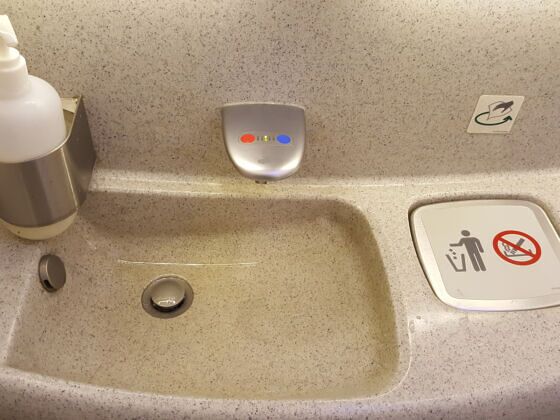This is the Travel Take, where Matador’s writers and editors make the case for their favorite travel hacks, tips, and personal tics.
Science says that the germiest surface in an airplane is the tray table, and flight attendants warn that the plane’s windows are filthy, too. But this time, science and cabin crews have it all wrong. No matter the amount of swabbing and analyzing that is carried on, I am convinced that the grossest parts of an airplane are the bathroom trash cans.
